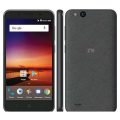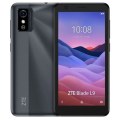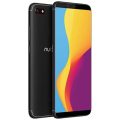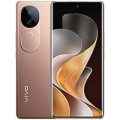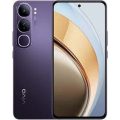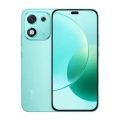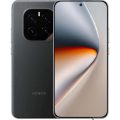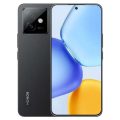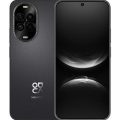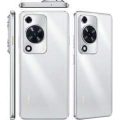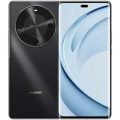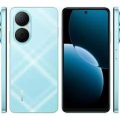ZTE Blade X
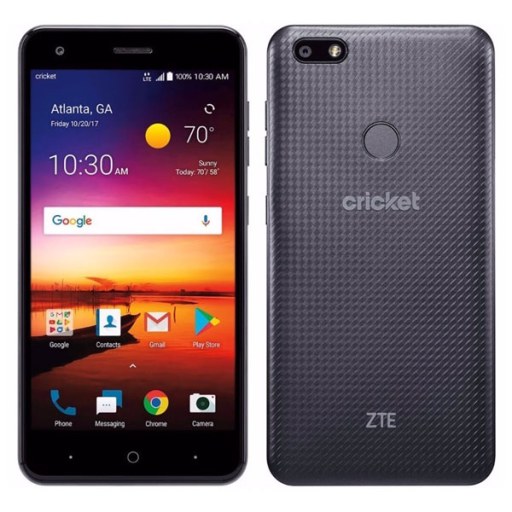

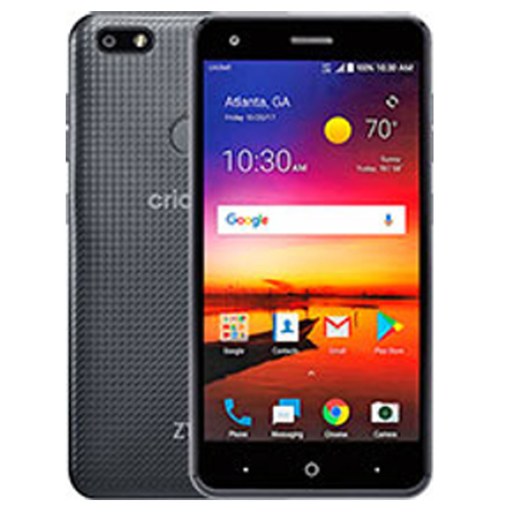

-
Released: Released 2017, October
-
Operating System: Android 7.1.1
-
Display: 5.5" 720x1280 pixels
-
Camera: 13MP 1080p
-
RAM: 2GB RAM Snapdragon 425
-
Battery: 3000mAh
Specifications
Prices
| Official Official | 13490 BDT |
| Unofficial Unofficial | N/A |
Launch
| Announced Announced | 2017, October |
| Status Status | Available. Released 2017, October |
Network
| Technology Technology | GSM / HSPA / LTE |
| 2G 2G | GSM 850 / 900 / 1800 / 1900 |
| 3G 3G |
HSDPA 850 / 1900 / 1800 |
| 4G 4G |
2, 4, 5, 12 |
| 5G 5G | N/A |
| Speed Speed | HSPA 42.2/5.76 Mbps, LTE Cat4 150/50 Mbps |
| GPRS GPRS | |
| EDGE EDGE |
Body
| Dimensions Dimensions | 156 x 77.5 x 8.9 mm (6.14 x 3.05 x 0.35 in) |
| Weight Weight | 156 g (5.50 oz) |
| Build Build | Plustic frame |
| SIM SIM | Nano-SIM |
| Water Resistant | N/A |
Display
| Type Type | IPS LCD |
| Size Size | 5.5 inches, 83.4 cm2 (~69.0% screen-to-body ratio) |
| Resolution Resolution | 720 x 1280 pixels, 16:9 ratio |
| Protection Protection | Asahi Dragontrail Glass |
| Refresh Rate Refresh Rate | 60Hz |
| Features Features | ~267 ppi density |
Platform
| Operating System OS => Every computer system run on a base software called Operating System (OS). Operating System controls all basic operations of the computer (such as smartphone, PDAs, tablet computers and other handheld devices). The Operating System allows the user to install and run third party applications (apps), apps are used to add new functionality to the device. | Android 7.1.1 (Nougat) |
| Chipset Chipset | Qualcomm MSM8917 Snapdragon 425 (28 nm) |
| CPU CPU | Quad-core 1.4 GHz Cortex-A53 |
| GPU GPU | Adreno 308 |
Memory
| Card slot Card slot | microSDXC (dedicated slot) |
| Internal Internal | 16GB eMMC 5.1 |
| RAM RAM | 2GB |
Main Camera
| Back Back |
13 MP, AF |
| Features Features | LED flash, HDR, panorama |
| Video Video |
1080p@30fps |
Selfie camera
| Front Front |
5 MP |
| Features Features | HDR |
| Video Video |
720p |
Sound
| Alert Types | Vibration |
| Loudspeaker | Yes |
| 3.5 mm jack 3.5 mm jack | Yes |
Connectivity
| WLAN WLAN | Wi-Fi 802.11 b/g/n, Wi-Fi Direct |
| Bluetooth Bluetooth is a wireless communications technology for exchanging data between mobile phones, headsets, computers and other network devices over short distances without wires, Bluetooth technology was primarily designed to support simple wireless networking of personal consumer devices. | 4.2, A2DP, LE |
| GPS GPS The Global Positioning System is a satellite-based radio navigation system, GPS permits users to determine their position, velocity and the time 24 hours a day, in all weather, anywhere in the world, In order to locate your position, your device or GPS receiver must have a clear view of the sky. | Yes |
| NFC NFC (Near field communication) is a set of standards for smartphones and similar devices to establish peer-to-peer radio communications with each other by touching them together or bringing them into proximity, usually no more than a few inches. | |
| FM Radio | Yes |
| USB | USB Type-C |
| Infrared port Infrared connectivity is an old wireless technology used to connect two electronic devices. It uses a beam of infrared light to transmit information and so requires direct line of sight and operates only at close range. |
Features
| Sensors Sensors are electronic components that detects and responds to some type of input from the physical environment. The specific input could be light, heat, motion, moisture, pressure and location, The output is generally a signal that is converted to use in computing systems, a location sensor, such as a GPS receiver is able to detect current location of your electronic device. |
Fingerprint (rear-mounted), accelerometer, proximity |
| Messaging Messaging | Yes |
| Browser Web Browser => a web browser is a software application used to locate, retrieve and display content on the World Wide Web, including Web pages, images, video and other files, The primary function of a web browser is to render HTML, the code used to design or markup webpages. | HTML5 |
| Java Support Java for Mobile Devices is a set of technologies that let developers deliver applications and services to all types of mobile handsets, ranging from price efficient feature-phones to the latest smartphones. Java is currently running on over 3 billion phones worldwide, and growing. It offers unrivaled potential for the distribution and monetization of mobile applications. |
Battery
| Battery Type Battery Type => Cell phones run on various kinds of batteries depending on the manufacturer, phone size or shape and features. There are basically four types of cell phone batteries => Lithium Polymer, Lithium Ion, Nickel Metal Hydride and Nickel Cadmium. | non-removable |
| Capacity Battery Capacity is a measure (typically in Amp-hr) of the charge stored by the battery, and is determined by the mass of active material contained in the battery. The battery capacity represents the maximum amount of energy that can be extracted from the battery under certain conditions. | Li-Ion 3000 mAh |
| Charging Wireless Charging (Inductive Charging) uses an electromagnetic field to transfer energy between two objects. This is usually done with a charging station. Energy is sent through an inductive coupling to an electrical device, which can then use that energy to charge batteries or run the device. | Yes |
| Fast Charging Fast Charging | No |
More
| Made by Made by | China |
| Colors | Black |
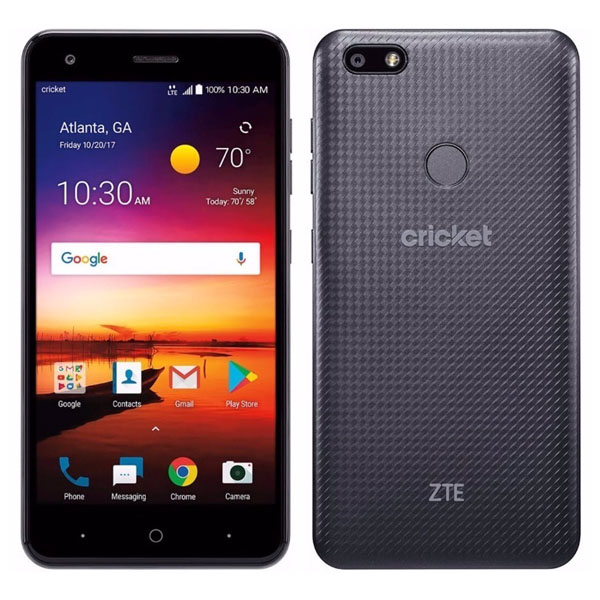
ZTE Blade X in Bangladesh: An In-Depth 2025 Review
If you’ve been scouting for a budget Android phone in Bangladesh and stumbled across the ZTE Blade X, you’re not alone. This handset pops up in Facebook Marketplace posts, smaller retail shops, and refurbished phone counters because it straddles a curious space: it’s an older, entry-level device that still promises a dependable “basic smartphone” experience for calls, messaging, light social apps, and everyday utilities. In this review, we’ll unpack what that means today—focusing on design, display, performance, camera, battery life, software, and the all-important question of whether it’s competitive in the local market in 2025. We’ll also touch on practical realities like parts, repairs, and buying considerations that matter specifically to Bangladeshi users.
Note: The unit most people refer to as the ZTE Blade X is the 2017 model originally aimed at entry-level buyers. In Bangladesh, it appears mainly via used/refurb imports rather than official, brand-new retail. Keep that context in mind as you read.
Design & Build Quality
The ZTE Blade X follows the classic budget-phone template of its era: a 5.5-inch body with a 16:9 display, curved plastic back, and a straightforward layout with power/volume keys on the right. At roughly the mid-150-gram range, it’s light by modern standards and comfortable to hold. The bezels are chunky compared to today’s near-bezel-less looks, and there’s no punch-hole or notch—it’s simple top/bottom forehead and chin.
What holds up in 2025:
- Ergonomics. The compact width and weight make it pleasant in one hand, especially for users who find today’s 6.6–6.8-inch phones unwieldy.
- Durability expectations. It’s plastic, yes, but that can be a positive: plastic backs don’t shatter like glass. If you add a silicone case and a tempered glass protector (widely available in local accessory shops), day-to-day scuffs are manageable.
Where age shows:
- Outdated aesthetic. If you care about modern design trends (thin bezels, hole-punch cameras, matte glass), this looks dated.
- No IP rating or premium niceties. You won’t find water resistance, stereo speakers, or metal frames here.
For a basic, get-the-job-done device, the build remains serviceable. If you’re gifting an older family member or looking for a dependable spare phone for travel, the form factor has a certain “no-drama” charm.
Display
The ZTE Blade X uses a 5.5-inch HD (720p) LCD in a 16:9 aspect ratio. In today’s Bangladesh market, even budget models frequently offer larger 6.5-inch panels at 720p or even 1080p, often with higher refresh rates. So the ZTE Blade X screen lands squarely in “usable but dated” territory.
Strengths:
- Readable for basics. For messaging, voice/video calls, and casual YouTube at 480p–720p, it’s fine. Colors lean slightly cool but are acceptable for the class.
- Less strain for some users. A smaller 5.5-inch display can feel less fatiguing to hold and use for long scroll sessions.
Compromises:
- Brightness and outdoor visibility. Expect decent indoor clarity but some struggle under Dhaka’s midday sun. Cranking brightness helps, but reflectivity and panel limits remain.
- No high refresh rate. Scrolling isn’t as buttery as 90Hz/120Hz panels that have trickled down to affordable phones.
If you’re coming from a feature phone or a very old Android, the screen will feel like a step up. If you’re used to modern displays, it’s simply “okay.”
Performance
Under the hood, the ZTE Blade X runs on a basic Snapdragon 4-series chipset from the 2017 era, typically paired with 2 GB RAM and 16 GB internal storage (with microSD support). Measured against 2025 budget phones in Bangladesh—many now offer 4–8 GB RAM and 64–128 GB storage—this is tight.
Real-world usage in 2025:
- Smooth enough for essentials. Calling, SMS, WhatsApp, Messenger Lite, bKash/Nagad, and general web browsing are achievable if you keep background apps minimal.
- Social media. Facebook works, but the full app can feel heavy; Facebook Lite/Instagram Lite is more comfortable. Short-form video apps load, but performance can dip with heavy feeds and ads.
- Gaming. Entry-level only. Old 2D titles or ultra-low settings in lightweight games are feasible, but don’t expect stable frame rates in PUBG/BGMI, Free Fire Max, or graphically intense racing games.
Tips to keep it snappy:
- Use Lite versions of social apps (Facebook Lite, Messenger Lite).
- Disable auto-start for non-essential apps.
- Keep storage uncluttered; rely on microSD for media.
- Consider a lightweight launcher if the default feels sluggish.
If your needs are modest, the ZTE Blade X can still pass—just don’t push it beyond simple tasks.
Camera Quality
The main camera is a single 13 MP shooter with a standard f/2.x-style aperture and basic autofocus; the front camera sits around 5 MP. There’s no night mode, no multi-lens setup, and no computational imaging wizardry that newer low-end phones sometimes offer.
Daytime performance:
- Decent sharpness and color. In bright light, you’ll get shareable results for Facebook and WhatsApp. Focus is generally reliable with a short tap-to-focus pause.
Indoor/low light:
- Noise and blur creep in. Expect grain and reduced detail. Without OIS or advanced night algorithms, low-light photos are the ZTE Blade X’s Achilles’ heel. A steady hand and enabling the flash help, but don’t expect miracles.
Video:
- Up to 1080p at 30fps in most cases, with basic electronic stabilization at best. It’s adequate for quick clips but won’t look cinematic.
Selfies:
- Functional but soft. Good enough for video calls and profile pics in bright light; suffers indoors or at night.
For documentation, casual memories, and social sharing, the cameras can still serve. But if photography matters, even newer budget phones around ৳10–15k with modern sensors will outclass it.
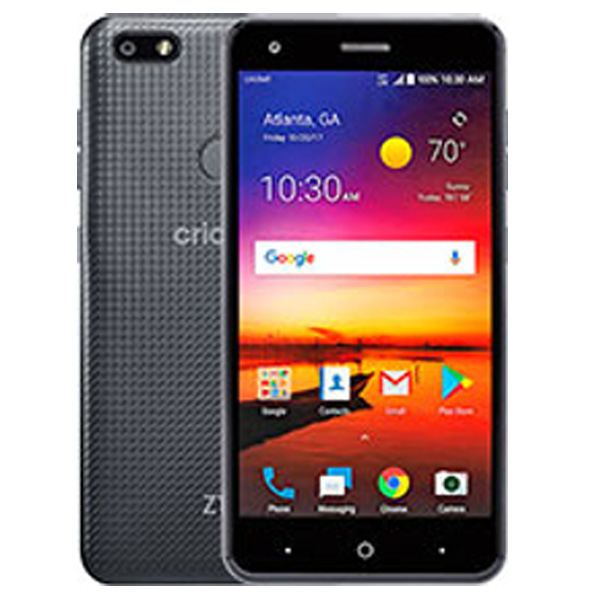
Battery Life & Charging
The ZTE Blade X typically includes a 3000 mAh battery (non-removable) with basic fast charging of its generation. Given its small display and modest chipset, battery endurance is better than you might expect—especially on a lightly loaded device.
What we observed:
- All-day on light use. Calls, messaging, a few hours of browsing, and sporadic videos can comfortably reach the evening.
- Standby behavior is decent. If you use it as a secondary phone, it sips power when idle.
- Charging speed is modest. Don’t expect modern 33W+ speeds. Plan on more traditional charging times—think “charge at lunch” or “plug in before bed.”
Battery health considerations for used units:
- Older cells degrade. If you’re buying second-hand, ask the seller about battery condition and real-world screen-on time. Many local repair shops can replace the battery on older ZTE models, but verify parts availability and workmanship first.
Software Experience
The ZTE Blade X originally shipped with stock-leaning Android of its time, without heavy skins. In 2025, your experience depends on how the phone was refurbished and what firmware it’s currently running.
Positives:
- Clean layout. Fewer preinstalled apps than some budget competitors from the same era. A light OS keeps things manageable on 2 GB RAM.
- Bangla readiness. The Android text stack supports Bangla script rendering. For typing, install Ridmik Keyboard or Google Indic Keyboard—both are popular in Bangladesh and work smoothly for Bangla/English switching.
Caveats:
- Update status. Don’t expect official Android version upgrades or recent security patches. Apps will still run, but you won’t have the latest system-level protections.
- App compatibility. Most mainstream apps still support older Android versions, but over time, more apps are raising their minimum requirements. If a mission-critical app requires a newer Android version, this could be a show-stopper.
Customization tips:
- Switch to a lightweight launcher (e.g., a simple, no-animation launcher).
- Use “Lite” app versions where possible.
- Disable animations in Developer Options to make navigation feel snappier.
Connectivity & Network Experience in Bangladesh
The ZTE Blade X is a 4G/LTE handset. In practice:
- Calls and VoLTE. Basic 4G calling quality is fine where supported; check whether your carrier (Grameenphone, Robi, Banglalink, Teletalk) delivers VoLTE for your specific IMEI. On older imports, VoLTE whitelisting can be hit-or-miss.
- Wi-Fi and Bluetooth. Sufficient for everyday use; don’t expect the latest Wi-Fi standards or Bluetooth codecs.
- GPS. Works adequately for Google Maps and Pathao/Uber, though initial locks can be slower than modern mid-range phones.
If you’re in a dense urban area like Dhaka, you’ll probably be fine, but rural fringe coverage and VoLTE quirks are worth checking per operator.
Audio & Media
A single bottom-firing (or back-firing, depending on variant) loudspeaker delivers basic volume for ringtones and casual videos. The 3.5 mm headphone jack is a welcome inclusion—many recent flagships have dropped it. With wired headphones, streaming music is perfectly enjoyable, especially if you aren’t chasing audiophile quality.
Calls: Earpiece clarity is acceptable; ambient noise in busy markets will still challenge a single mic setup, so consider earphones for long calls.
Storage, Security & Biometrics
With 16 GB internal storage, you’ll want to:
- Insert a microSD card for photos, videos, and downloads.
- Regularly clear cache and old WhatsApp media.
- Use cloud backups sparingly if data plans are tight.
As for security, the ZTE Blade X variants often rely on PIN, pattern, or basic fingerprint (depending on the exact sub-model). If your unit lacks a fingerprint reader—or it’s unreliable—stick to a strong PIN. For app-by-app locking, popular local locker apps can add a layer of privacy.
Price & Availability in Bangladesh (2025 Reality Check)
In 2025, the ZTE Blade X is not a mainstream, officially distributed new device in Bangladesh. Instead, you’ll encounter:
- Used or refurbished units from small traders.
- Occasional “new old stock” (rare) that’s been sitting unopened; always inspect seals and verify IMEI.
- Varying prices based on cosmetic condition, battery health, included accessories, and whether the set is “box pack” or “set only.”
Where does that land on price? The ZTE Blade X debuted years ago at an entry-level tag, and in today’s second-hand market you’ll typically see sub-৳10,000 asking prices, often lower if the condition is average or the battery shows age. Keep in mind that prices fluctuate by area (Dhaka vs. divisional towns), condition, and whether you’re buying from a shop with a short warranty (common: 7–30 days) versus a person-to-person sale.
Buying checklist for Bangladesh:
- IMEI & network check: Insert your SIM on the spot and make a test call. Verify 4G connects and data works.
- Battery test: Ask to use the device for 10–15 minutes (browsing + YouTube). Watch the percentage drop; huge dips suggest a tired cell.
- Camera & mic: Record a short video with audio. Check focus, mic clarity, and speaker.
- Display inspection: Look for discoloration, touch dead zones, and excessive backlight bleed.
- Accessories & warranty: A basic charger and a short in-store warranty add confidence; insist on a written card if offered.
How It Stacks Up Against New Budget Phones (৳7k–৳15k Range)
Bangladesh’s 2025 entry-level market is surprisingly competitive. Brands like itel, Infinix, Tecno, Symphony, realme (C-series), Xiaomi (Redmi A-/C-series), and even ZTE’s own newer ZTE Blade X A-series offer:
- Bigger displays (6.5″ and up) with slimmer bezels.
- More RAM/storage (4/64 GB or better) for smoother daily use.
- Fresher software and often newer security patches.
- Larger batteries (5000–6000 mAh) with faster charging.
- Improved cameras with modern image processing.
Against that backdrop, the ZTE Blade X’s main advantages are:
- Lower entry price on the second-hand market.
- Compact size that some users prefer.
- Simplicity for basic tasks and as a dependable backup phone.
And its disadvantages are clear:
- Aging hardware that limits multitasking and modern app comfort.
- Older software with likely no updates.
- Camera and low-light performance that lag behind newer budget phones.
- Repair/parts uncertainty compared to widely sold current models.
Who Should Consider the ZTE Blade X in 2025?
- First-time smartphone users transitioning from a feature phone who mainly need calls, messaging, bKash/Nagad, WhatsApp/Imo, and light browsing.
- Parents or elders who want a smaller, lighter device without the complexity of modern, heavily skinned UIs.
- A reliable backup phone for travel, a second SIM, or a dedicated hotspot device.
- Tight budgets where the priority is “working Android phone under the lowest possible price,” and you’re comfortable with used/refurbished gear.
Who Should Skip It?
- Students and young professionals who rely on multitasking, frequent social media creation, or gaming—even casual gaming feels better on today’s entry-mid devices.
- Anyone who cares about camera quality beyond daylight snapshots.
- Security-conscious users who want current Android versions and regular patches.
- Power users who keep many apps in memory and demand fast app switching.
Practical Tips to Get the Most Out of a ZTE Blade X
- Start with a factory reset on day one to ensure a clean slate, then update all apps to their latest compatible versions.
- Install Lite apps (Facebook Lite, Messenger Lite, Instagram Lite, YouTube Go alternatives where reputable) to reduce RAM/storage pressure.
- Use a microSD card to offload media. Configure camera storage to SD by default.
- Tame notifications and auto-starts so background processes don’t bog down the 2 GB RAM.
- Reduce animations (Developer Options → Window/Transition/Animator scale at 0.5x or off) to make navigation feel snappier.
- Keep a power bank handy if you’re on mobile data all day—battery is decent, but a 3000 mAh cell is modest by 2025 standards.
- Protect the screen and body with a case and tempered glass; they’re cheap and easy to find in local accessory markets like Bashundhara City, Eastern Plus, or your district’s mobile market.
Strengths & Drawbacks at a Glance
Strengths
- Comfortable, compact 5.5-inch form factor.
- Handles core tasks (calls, messaging, bKash/Nagad, navigation) reliably when kept lean.
- Very affordable in used/refurbished channels.
- 3.5 mm headphone jack and microSD support.
- Simple software experience suitable for basic users.
Potential Drawbacks
- Aging processor with only 2 GB RAM and 16 GB storage—tight for 2025.
- Limited camera performance, especially in low light.
- Older Android version with no modern security updates.
- Smaller battery by today’s standards, with modest charging speeds.
- Availability and parts/service can be inconsistent across Bangladesh.
Bottom Line: Is It Competitive in Bangladesh Today?
“Competitive” depends entirely on your budget and expectations. As a brand-new purchase, it would not be competitive against 2025 entry-level models that bring larger batteries, more RAM, fresher Android versions, and better cameras at still-affordable prices. But as a very low-cost, second-hand buy, the ZTE Blade X stakes a claim as a practical basic smartphone for users with simple needs—especially if you value the hand-friendly size and can find a unit in good condition at a bargain price.
If your budget stretches to the lower end of current new phones (often around ৳8,000–৳12,000 for base configurations), you’ll likely enjoy a noticeable upgrade in performance, battery, and camera by choosing a 2024–2025 device from mainstream brands. Those will also be easier to service and accessorize. However, if you truly need to minimize cost and you’re comfortable buying used, a well-kept ZTE Blade X can still function as a reliable daily driver for calls, messaging, and essential apps in Bangladesh.
Recommendation for Bangladesh Buyers
- Buy it if:
You find a well-maintained ZTE Blade X at a very low price, you only need core tasks (calling, WhatsApp/Imo, bKash/Nagad, light browsing), and you’re okay with an older Android and modest cameras. Double-check battery health and network compatibility before handing over money. - Skip it if:
You want better cameras, longer battery life, smoother multitasking, and at least a semi-recent Android version. In that case, steer toward new 2024–2025 entry-level models in the ৳10k–৳15k bracket; they’ll serve you better for the next 2–3 years.
For visibility as requested: ZTE Blade X (tag) — and again — ZTE Blade X (tag).
Final Word
The ZTE Blade X is a reminder that not everyone needs the latest specs to stay connected. In the Bangladesh market of 2025, it remains relevant as a budget-conscious, back-to-basics choice—best suited for first-time smartphone users, elders, and anyone who values simplicity over speed. If you can secure a clean unit, pair it with Lite apps, and maintain realistic expectations, this understated phone can still deliver a dependable everyday experience.
Reviews
Disclaimer Note
We always try our best to keep our website content and information updated and correct, the material and information contained on our website is for general information purposes only, You should not rely upon the material and information as a basis for making any business, legal or any other decisions.

